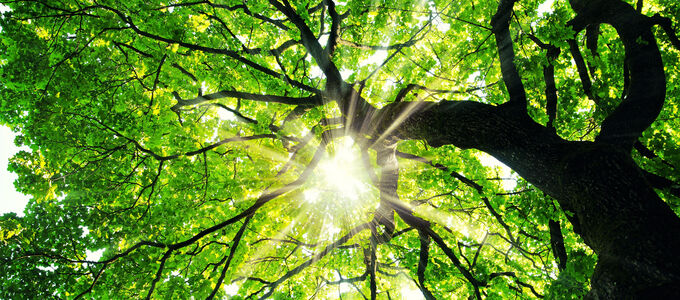
At the beginning and end of the Bible, trees and their fruit play a prominent role. The best known of the two is not even the most important. Here is a reflection on Arbour Day.
Many countries across the world observe Arbour Day and mark it by planting trees. The day has been around for a more or less a long time. In the United States and also in Australia Arbour Day is observed in April and was first initiated in 1872. Trees are critical for a healthy environment. Some trees have very long lifespans. Olive trees and date palms can easily live for several hundred years. One olive tree on the island of Crete in Greece is estimated to be about 4,000 years old.
Trees are a symbol of life: even if you cut a tree back drastically it will sprout again. In the fall, deciduous trees shed their leaves and look as though they are dying. But every year in spring the trees awaken to new life. Their fruit provides food for humans and animals, their leafy branches provide shade in hot summers.
When you gaze into the crown of an old tree it makes you think of the diversity of the universe and the rustling of the leaves sounds like the whisperings of an oracle. It is not surprising then that many ancient religions considered trees to be the seat of the gods, and myths and legends developed around particularly gnarled and old specimens.
In Mesopotamian mythology, the heavenly tree overshadowed all the lands and carried all the seeds of the earth. In ancient Egypt, there was the myth of a tree of life which made the pharaoh immortal. In Canaan, the olive tree, the vine, and the date palm were sacred and considered a tree of heaven.
Surrounded by these myths, the people of Israel adopted some of these images into their own rites. Also the Israelites anointed their kings with oil that they extracted from trees. Images of trees were incorporated into their stories. Ezekiel compares Egypt to a stately cedar that towers over everything, and Isaiah also uses a tree as a metaphor. And neither can the Eden narrative do without two particular trees.
The tree of knowledge
It must have been paradise: a garden full of trees and shrubs which God Himself had chosen and planted. There were four rivers that watered the garden and made it fertile. All the animals co-existed peacefully, and Adam and Eve were both naked—and they felt no shame. In the middle of the garden were two trees. Eve took an apple from one of them and ate.
Wait a minute. An apple?
In Palestina, apple trees were rare, especially the beautiful red ones we see in paintings that illustrate the fall into sin. But green apples from a wild apple tree or a wood apple were known. So the apple was a known fruit, but there is no mention of it in the Eden narrative. The Bible only speaks of a fruit. The apple crept into the Christian tradition because of a linguistic misunderstanding: the Latin word for evil is the same as the word for apple: malum.
The first two human beings ate the unknown fruit although they knew perfectly well that it was forbidden. This is how they acquired the knowledge of good and evil. The first thing they saw was that they were naked. The Bible does not go into more detail here about the nature of knowledge, but the story does explain where ethical discernment comes from. It is an image for the alternatives available to human beings: whether to obey God and leave the hierarchy up to Him, or whether humans want to know all the hierarchies themselves and achieve this through disobedience.
The tree of life
The tree of life plays rather a secondary role in the Eden narrative. After Adam and Eve had fallen into sin, God banished them from the Garden of Eden so that they would not still eat from the tree of life and live forever. After God drove them out, He placed cherubim at the entrance to guard the tree of life.
In the Bible, the tree of life—known through myths—only plays a prominent role in the book of Revelation. In the future it will be possible to eat from the tree of life because the kingdom of God will be the perfect manifestation of Paradise. It is Jesus Christ who made this possible through His sacrificial death. “To him who overcomes I will give to eat from the tree of life, which is in the midst of the Paradise of God,” it says in Revelation 2: 7. This is interpreted as a symbol of Jesus Christ. And in Revelation 22, the last chapter of the Bible, clear memories of Paradise are evoked. Here we find the promise of eternal life for those who overcome with Christ. Thus the Bible begins and ends with references to a tree that gives eternal life.
Photo: Anselm Baumgart – stock.adobe.com




